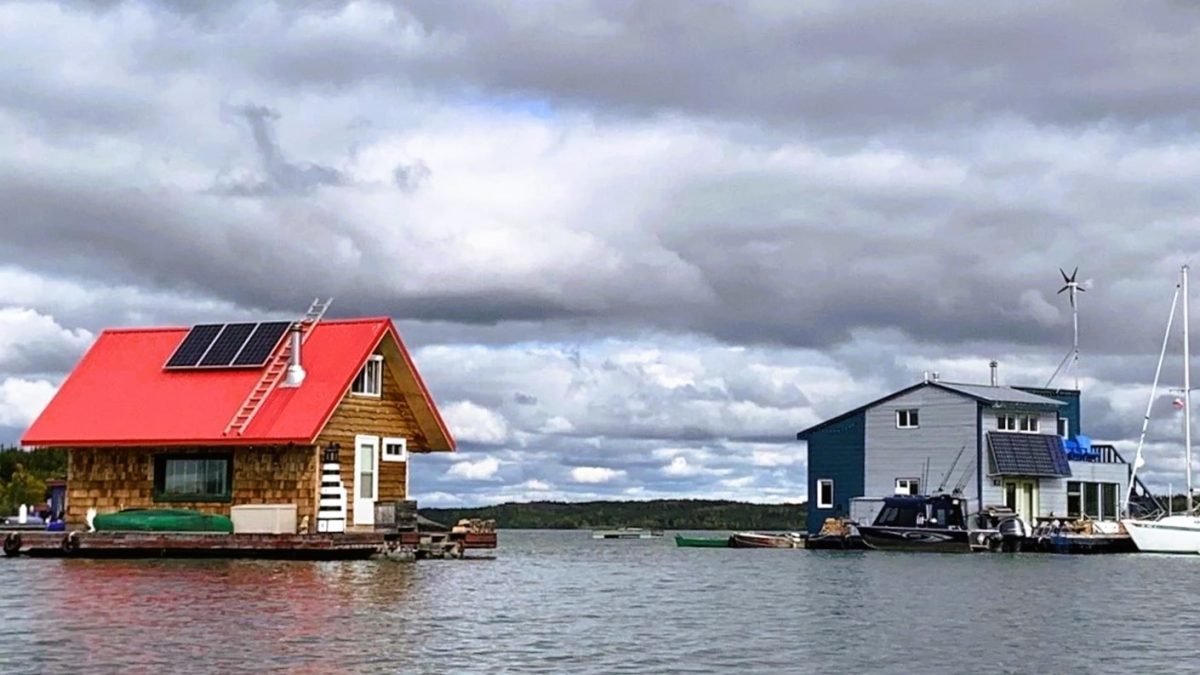Our Changing Watershed: Living with Flood Waters
A floodplain is a risky area to build.
By Dr. Neil Hutchinson.

How can we reduce the severity of flooding and its impacts in Muskoka?
In 2020, the Province of Ontario, through the District of Muskoka and the Muskoka Watershed Advisory Group (MWAG), funded a study by Hatch Engineering, which identified 10 infrastructure projects that could lessen the severity of flooding in specific local areas of the watershed. Estimated costs for all 10 projects exceeded $190 million based on the 2019 flood levels. If all the projects were implemented, they would lessen, but not eliminate, the risk of flooding and would provide even less protection if flooding became more severe in the future. We need to look at other ways to live with floods — we cannot build our way out of the risk.
Given that structural mitigation will not prevent flood damages and the absence of concrete progress in addressing climate change, we are certain to experience more and more severe flooding in Muskoka’s future. Maybe we should focus our efforts on ways to live with the inevitable flooding, to adapt to changing water levels and take actions at the local and individual level that will lessen damages.
What could we do?
Coastal communities have built around and adapted to water levels that fluctuate by several metres twice a day through floating structures such as docks and boathouses. Why couldn’t we encourage that in Muskoka?
A quick Google search reveals companies that have built floating boathouses, some quite large and with second-storey living accommodation, in Muskoka. Floating homes are a fixture at Granville Island, Vancouver where tides range over eight metres twice daily. If a flood ruins a fixed-in-place boathouse to the point where it needs to be rebuilt, why wouldn’t insurance coverage recognize that there are alternatives that would not need replacing after the next flood, and finance a structure that would simply rise and fall with the freshet?
“What about winter?” some may ask. Winters are much more severe in the Northwest Territories than in Muskoka, yet the City of Yellowknife includes several dozen houses floating in Yellowknife Bay that are safely occupied year round with no damage due to changing water levels of 20 to 40 cm annually and ice up to 1.5 metres thick.
We recognize the floodplain is a risky area to build, yet people build there and have built there since Muskoka was settled. If our flooding risk increases, would it not make sense for municipalities or the province to purchase floodplain properties as park land in which flood waters could be temporarily stored with no harm to people or structures?
For example, instead of rebuilding after disastrous floods in 2019, the city of Tulsa, Okla., used $14.75 million in federal disaster relief funding to move homes out of the 100-year floodplain. The floodplain area once occupied by homes is to become open space, green space, recreational grounds or floodplain management areas.
Proximity to water makes floodplains popular areas for recreational facilities, and these can be designed to accommodate temporary flooding — is this a consideration for the future uses of the “Rona lands” on the North Muskoka River in Bracebridge?
Our management of the watershed should not be limited to updating water control structures. Instead, flood adaptation and mitigation should take an integrated approach. We should begin with preservation of natural features that reduce flooding risk, promote conversion of floodplain areas from residential and commercial uses to parkland and recreational uses that are not impaired by flooding and should consider “flood smart” shoreline structures such as docks and boathouses that float on changing water levels.
Our activities should recognize the natural cycles and work with the water in the watershed rather than try to change the water flow to meet our needs.

This article is one of Muskoka Watershed Council’s summer 2023 series on “Our Changing Watershed” in The Muskokan newspaper. This week’s contributor and series editor is Neil Hutchinson, a retired aquatic scientist, Bracebridge resident and director of Muskoka Watershed Council.
Originally published in June 2023 on MuskokaRegion.com and republished on 5 April 2025 as article #17 in the First Steps on the Path to IWM article series.
